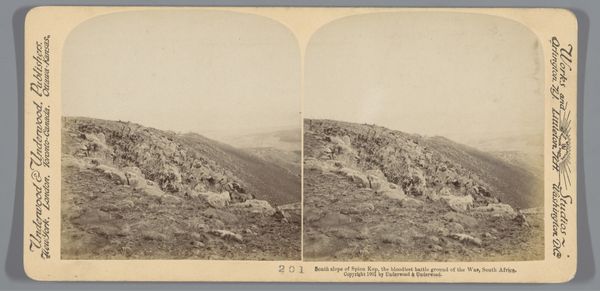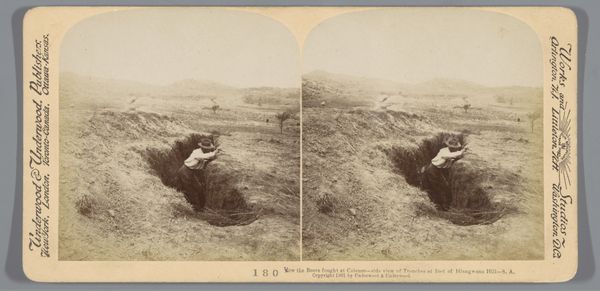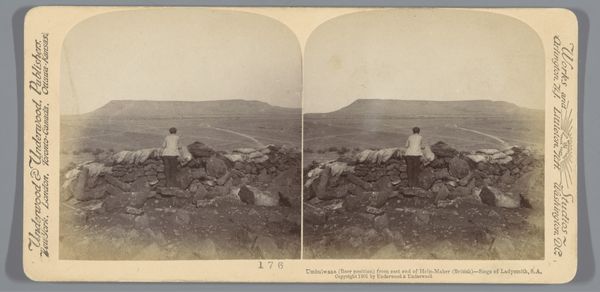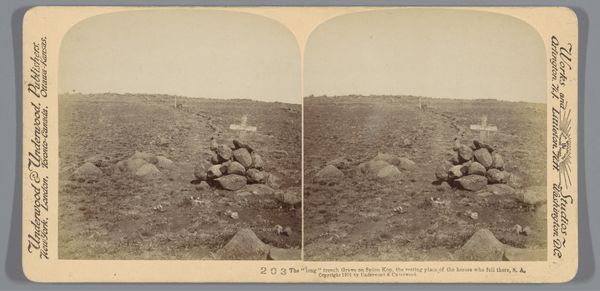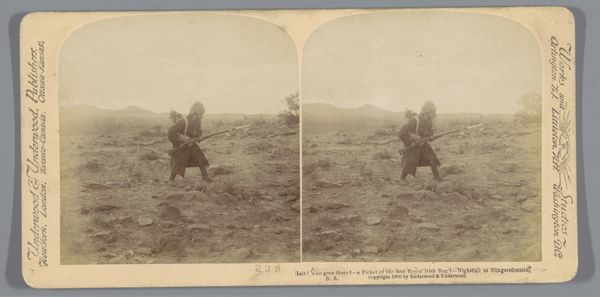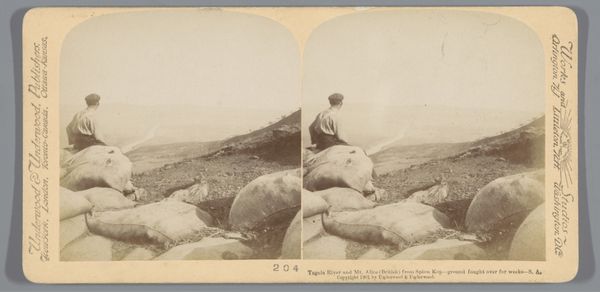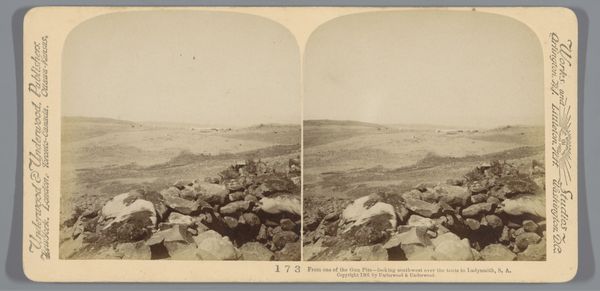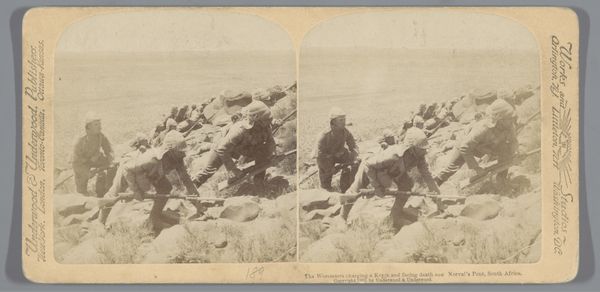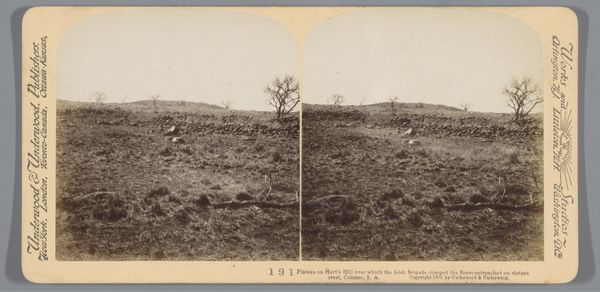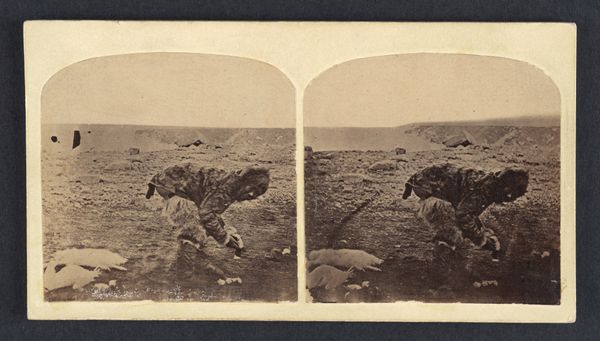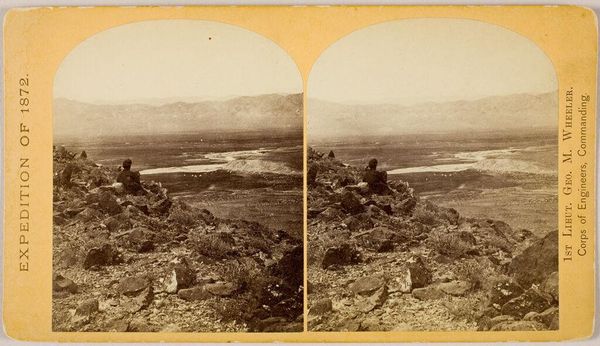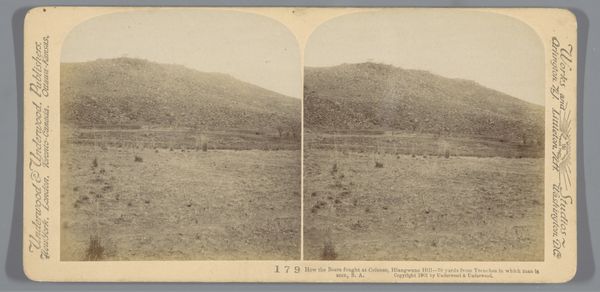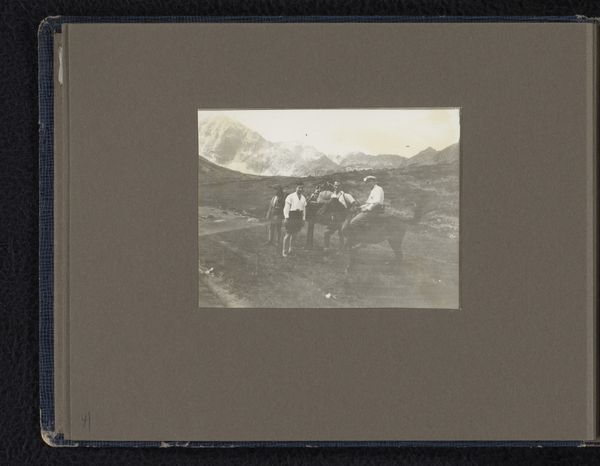
Gezicht op Transvaal ten zuiden van Johannesburg met een paard op de voorgrond 1901
0:00
0:00
photography, gelatin-silver-print
#
landscape
#
photography
#
horse
#
gelatin-silver-print
#
realism
Dimensions: height 88 mm, width 178 mm
Copyright: Rijks Museum: Open Domain
Curator: The sheer emptiness in this photograph immediately strikes me. It feels lonely, stark even. Editor: Let's delve deeper. The artwork we're looking at is titled "View of Transvaal, South of Johannesburg, with a horse in the foreground," taken around 1901. It’s a gelatin-silver print. Given the date, context is everything. Curator: Absolutely. This image offers a potent view into the intersection of colonialism, the land, and its inhabitants—both human and animal. The lone horse set against the vast landscape seems to represent a kind of reluctant witness. How do the historical implications shape our interpretation of the photograph? Editor: The Anglo-Boer War was raging at the time. Consider the politics of visibility: who is taking this photo, and what purpose does it serve? Is it a record, propaganda, or something more complex? The photograph participates in the visualization, and by extension the claiming, of territory. Curator: It makes me think about who has the privilege to occupy and document such spaces. And what kind of ideologies are we supporting when reproducing, showing and collecting this photo in a Western context today? Editor: Exactly. Museums have an important role here. The photograph has aesthetic qualities, sure. But even its composition must be interrogated: the way the land is flattened, the horse isolated. All of it underscores the power dynamic inherent in landscape photography during this era. It shows control of what can be seen. Curator: Yes, the 'framing' itself acts as a kind of ideological boundary. The barren landscape amplifies this tension and prompts a dialogue around concepts of exploitation, freedom and constraint, right? The horse looks forlorn. Editor: Thinking about it from a more socio-historical view, perhaps the horse is more symbolic of labor, property. Even just a tool in the colonial enterprise. What purpose might an image like this have served back in England or elsewhere at the turn of the century? It could be promoting the conquest. Curator: Bringing that critical lens illuminates how this image continues to resonate and how it reveals those uncomfortable aspects of our intertwined histories. Editor: It's precisely these types of challenging dialogues that underscore the photograph's significance. It shows that art acts not only as an aesthetic object, but also a socio-historical artifact that carries powerful weight.
Comments
No comments
Be the first to comment and join the conversation on the ultimate creative platform.
